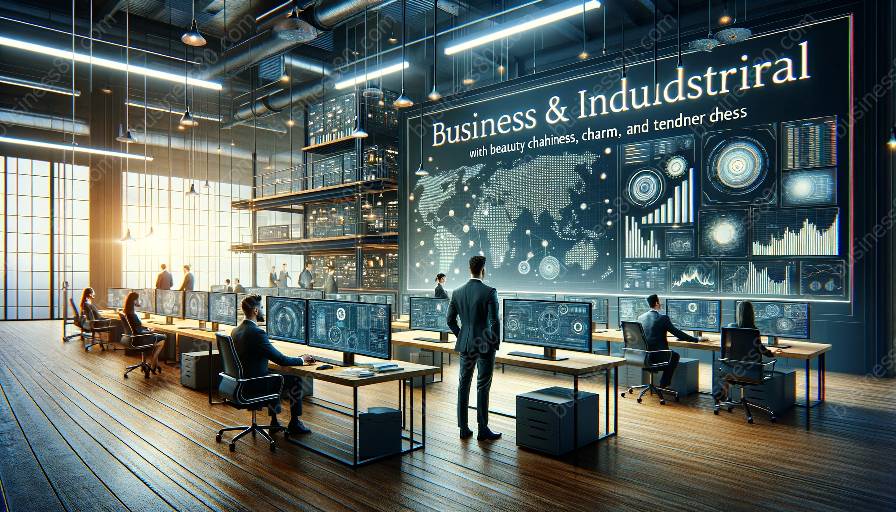In today’s digital age, the design of interactive systems plays a critical role in shaping user experiences and driving engagement. Visual design, in particular, is a key component that influences how users perceive, interact with, and derive value from interactive systems. In this comprehensive guide, we will explore the fundamental concepts, principles, and best practices of visual design for interactive systems. We will also delve into its compatibility with human-computer interaction (HCI), usability, and management information systems (MIS).
The Significance of Visual Design in Interactive Systems
Visual design is all about combining aesthetics and functionality to create an intuitive and visually appealing user interface. When it comes to interactive systems, visual design serves as a bridge between technology and users, enhancing the overall user experience and facilitating efficient interactions.
Effective visual design can convey information, guide user interactions, and evoke emotional responses, ultimately contributing to user engagement and satisfaction. In the context of human-computer interaction, visual design elements such as typography, color schemes, layout, and visual hierarchy significantly impact how users perceive and navigate interactive systems.
Impact on Human-Computer Interaction
Human-computer interaction (HCI) focuses on designing and evaluating interactive computing systems for human use. Visual design is a crucial aspect of HCI, as it significantly influences the usability and user experience of interactive systems. By incorporating principles of visual design, HCI professionals can create interfaces that are visually appealing, intuitive to use, and supportive of users’ cognitive processes.
Attention to visual aesthetics, consistency in design elements, and considerations for user feedback and response times are all essential for enhancing the human-computer interaction. Visual design also encompasses the accessibility and inclusivity of interactive systems, ensuring that the design caters to diverse user needs and preferences.
Relationship with Usability
Usability refers to the ease of use and learnability of a system, and visual design directly impacts the usability of interactive systems. A well-designed visual interface can streamline user interactions, reduce cognitive load, and make navigation more intuitive for users. Conversely, poor visual design choices can hinder usability, leading to frustration and lower task efficiency.
Visual consistency, clear information hierarchy, and effective use of visual affordances contribute to the usability of interactive systems. A visually coherent and well-structured design helps users understand and predict system behaviors, leading to improved overall usability and user satisfaction.
Integration with Management Information Systems
Management information systems (MIS) encompass the use of technology to collect, process, and present information to support decision-making and organizational processes. Visual design is integral to MIS, as it influences how data and information are presented and accessed within the system.
Effective visual representations of data, intuitive dashboards, and interactive visualizations enhance the usability and utility of MIS for decision-makers. Visual design in MIS also plays a critical role in communicating complex information effectively, allowing users to interpret and derive insights from data with ease.
Principles and Best Practices
When designing visual interfaces for interactive systems, it is essential to adhere to fundamental principles and best practices. These include:
- Visual Hierarchy: Organizing visual elements to guide user attention and prioritize information.
- Color Theory: Implementing color schemes that convey meaning, evoke emotions, and ensure accessibility.
- Typography: Choosing typefaces and text styles for optimal readability and visual impact.
- Responsive Design: Creating interfaces that adapt to different screen sizes and devices.
- Accessibility: Designing interfaces that accommodate users with diverse abilities and disabilities.
By incorporating these principles, designers can create visually compelling and user-friendly interfaces that support the objectives of human-computer interaction, usability, and management information systems.
Conclusion
Visual design for interactive systems is a multidimensional discipline that intertwines with human-computer interaction, usability, and management information systems. By understanding the principles and best practices of visual design, designers, HCI professionals, and MIS practitioners can collaboratively create interactive systems that are visually engaging, user-friendly, and effectively support decision-making and user interactions. Embracing the symbiotic relationship between visual design, HCI, usability, and MIS is crucial for delivering impactful and immersive interactive experiences in the digital landscape.

